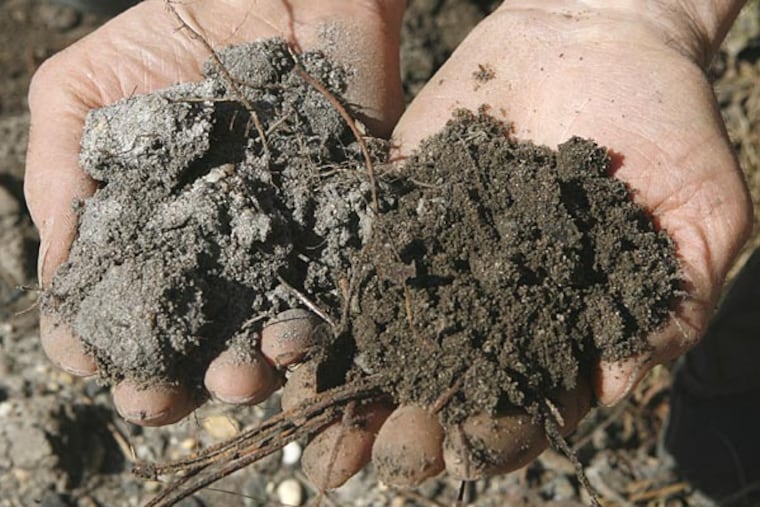April 5-11, 2019: In the garden, it’s time to...
Scoop a chunk of freshly dug soil and squeeze it in your hand to form a ball. Poke it gently with your finger and see what it does.

Do the soil test. Lots of things have happened since we last communed, and it’s time to assess what’s going on out there and start making plans: Scoop a chunk of freshly dug soil and squeeze it in your hand to form a ball. Poke it gently with your finger and see what it does.
If it stays in a ball, it’s too wet (and perhaps you should have done more soil prep in the fall). Until you check again in a few days, clean up in the meantime: Rake up the flotsam and jetsam of the last season and get rid of it. (Some of that trash might be indicative of non-garden problems around the house, like loose flashing, renegade siding, or flying shingles.)
If that ball of soil flakes apart, you’re good. Many plants and seeds bear the caveat: can be planted as soon as soil can be worked. So let’s get digging and get some seeds in the ground -- peas, carrots, lettuce, spinach, radishes, beets. Try some plants, too: lettuce, mustards, chard, pansies.
If your soil stays in a ball and the weather refuses to cooperate, take the time to grab some catalogs or go online and make some lists. Then cull, cull, and cull again. Statistics show that you really only need one-tenth of what’s on your initial list. So go through last year’s seeds, or, better yet, get together with neighbors and friends to order seeds together. Bulk buying keeps the cost down and gives you more variety than your lone purse can handle.
Sally McCabe is associate director of community education at the Pennsylvania Horticultural Society (phsonline.org) and winner of the AHS Great American Gardener Jane L Taylor award.